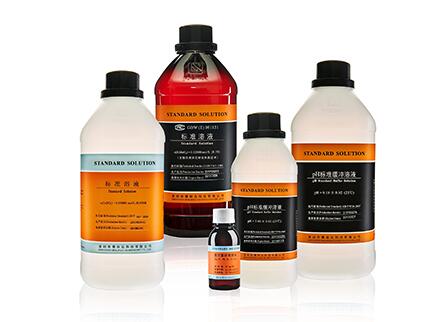2019-04-18 17:21:32
What is the reference material? How is the national standard material defined? Can't distinguish standard material, standard product and reference product? Welfare is here! Bolinda ® Xiaobian has compiled some expertise in this area to share with you!
A reference substance is one or more substances whose physical, chemical and metrological properties have been determined to be of high stability and have been formally approved for use as a standard for the purpose of calibrating measuring instruments, evaluating analytical methods or assigning values to materials. The use of standard substances/standard samples for monitoring is a very effective means of internal quality assurance in laboratory testing. At present, the standard substances/standard samples for chemical composition analysis of hazardous substances are mainly those for trace elements.
The fundamental purpose of laboratory quality control is to ensure the accuracy of its test results. For this purpose, the laboratory carries out quality control in accordance with the requirements of "5.9 Assurance of the quality of Test and Calibration Results" in CNAS-CL10 "Application Description of Testing and Calibration Laboratory Competence Accreditation Standards in the Field of Chemical Testing". Among them, the use of certified reference materials and secondary reference materials is a more common internal quality control method in laboratories. Therefore, how the laboratory uses the standard material monitoring and how to evaluate the obtained test data will have a great impact on the effect of quality control.

The reference material or secondary reference material can be a certified reference material or a reference material prepared by the laboratory. For certified reference substances, the laboratory can normally test them in accordance with their storage conditions and instructions for use; For the self-prepared reference material, first of all, it should be determined whether the control sample is uniform according to CNAS GL03 "Guidance for Evaluation of Uniformity and Stability of Samples for Capability Verification", and the "T-test method" method should be used to determine whether the control sample is stable. Under the premise of ensuring uniformity and stability, it is also necessary to confirm the characteristic value with a certified standard material or an authoritative laboratory in the same industry at the same time.
The use of reference materials and the evaluation of the results are usually added to the actual sample during the test process, so that the quality level of the reference material can be used to measure the quality of the entire test process. On this basis, the Shewhart process control theory is introduced, that is, after such quality control activities are carried out in a continuous cycle over a period of time, the overall level data of the test process can be obtained over a period of time.
The laboratory uses different statistical methods to evaluate the single and periodic data, so as to assess the quality of the whole time period. Laboratory Controlled samples (LCS) can be done once per batch of samples prepared or once per 20 samples. LCS should be prepared in accordance with the matrix and content levels commonly encountered, and the results of its determination can be established for analysis and evaluation of quality control charts.
No matter when there is an unsatisfactory result in the testing process of the standard material, appropriate corrective measures should be taken to find out the cause from the aspects of personnel, equipment, facilities, environment, samples and methods, and then take appropriate preventive measures to avoid the recurrence of problems in the future.
In the daily use of standard substances in the laboratory for internal quality control, En value, CD value, Z value and drawing control chart should be used to evaluate the data, the quality of the test results should be the most level and most accurate treatment, a more objective understanding of the laboratory's testing ability, find and improve the unqualified test work; At the same time, according to the trend change of data, the quality level has a peak, and timely preventive and corrective measures are taken to ultimately achieve the purpose of quality assurance.
The above content is the introduction of the definition of standard material, standard material is a measurement standard with accurate quantity value, it has been widely used in the field of chemical measurement, biological measurement, engineering measurement and physical measurement.





